Two "What the ... ?" on the Same Tree
I was in Winston-Salem, North Carolina, a couple of weeks ago. My wife had a week-long painting workshop there and I tagged along since I wasn’t traveling for work that week. Well, tagged along isn’t really accurate. I was there with the job of being a dog care professional.
So my wife’s dog and I walked around downtown Winston-Salem while I tried to convince the dog that it’s okay to carry out her routines on a foreign land. While I waited for her to finish sniffing and doing her business, I checked out the trees and the shrubs planted all around downtown for bugs and cruds. Not dissing Winston-Salem—it’s just a professional habit of mine.
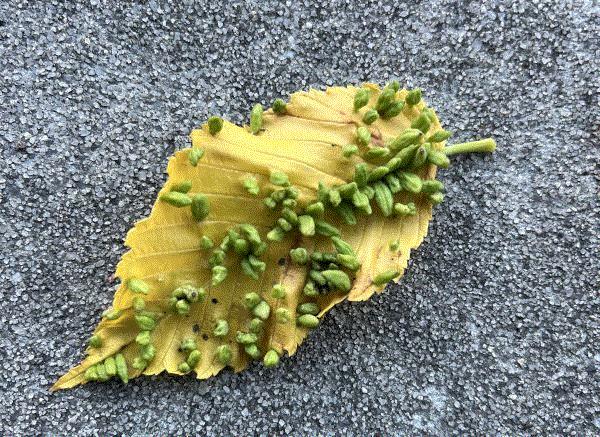
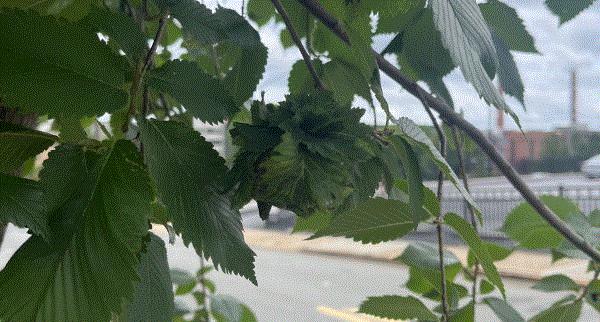
A couple of things on an American elm tree caught my attention. The first one was some weird growth on a fallen leaf. The second one was a bunched-up terminal. What in the world are they?
Box Tree Moth Found in West Virginia
The West Virginia Department of Agriculture announced on June 18 that the box tree moth has been detected in Berkeley County, West Virginia. (Go HERE for the announcement.) A communication from the National Plant Board indicated that the detection in Hedgesville, West Virgina, was made in late May and confirmed on June 4.
USDA-APHIS hasn’t established quarantine for Berkeley County. Quarantine is active in several counties in Delaware, Massachusetts, Michigan, New York, Ohio and Pennsylvania. Go HERE for more information on the distribution and quarantine of box tree moth. Go HERE for a copy of the compliance agreement for regulated nurseries if you want to see what the regulated articles and specific treatment options may be.
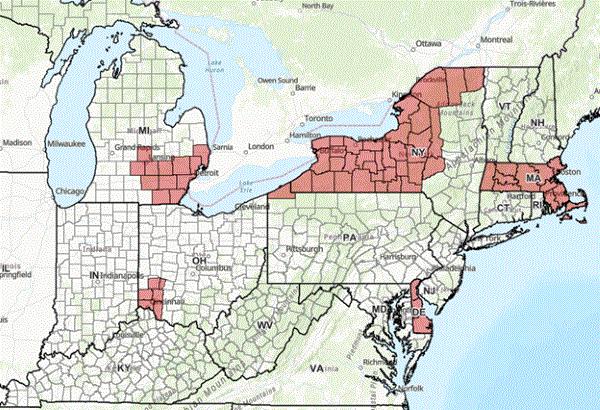
Counties with active quarantine against box tree moth are colored. (Source: USDA-APHIS-PPQ.)
Go HERE for a good technical bulletin on box tree moth from Virginia Tech. This document contains information on monitoring based on growing degree days and management using mass trapping, biological control and insecticide treatments based on research done by scientists at USDA-APHIS and Virginia Tech University.

AFE Announced Research Projects Funding
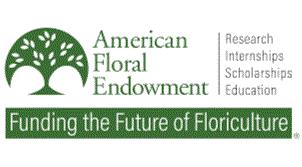
Two research projects will receive a total of $636,525 from the American Floral Endowment (AFE) in 2025-2026, announced Laura Barth, AFE Research Coordinator. Four of these projects are new, while the other eight are continuing projects.
The new projects are:
-
Assessing biocontrol and chemical strategies for managing Phytophthora spp. in commercial floriculture production by Ana Maria Pastrana Leon of the University of California Agriculture and Natural Resources
-
Reducing powdery mildew disease in floriculture using RNAi bioproducts by Mary Wildermuth of the University of California-Berkeley
-
Refining UV-C light application for thrips management in greenhouse ornamentals by Margaret Skinner of the University of Vermont
-
Bioreactors for reduction of agrochemicals in agricultural production water by Tom Fernandez of Michigan State University
The continuing projects are:
-
Mitigation of the invasive tropical pest, Thrips parvispinus: Clean start and biological control by Rose Buitenhuis, Vineland Research & Innovation Centre
-
Innovative 3-tiered management of western flower thrips in ornamental greenhouse productions by Christian Nansen of the University of California-Davis
-
Enhancing the performance of biological control agents for Botrytis control by Jim Faust and Guido Schnabel of Clemson University
-
Development of potent ethylene antagonists for floricultural crops by Rasika Dias from the University of Texas-Arlington
-
Identification and application of plant growth promoting bacteria to improve floriculture crop plant quality and reduce inputs by Michelle Jones of The Ohio State University
-
Putting floriculture A.I. to work: Development of smart diagnostic tools by Brian Whipker of North Carolina State University
-
Reducing peat-use in greenhouse production through wood fiber substrate stratification by Jeb Fields of the University of Florida
-
Floriculture production practices in peat reduced substrates by Brian Jackson of North Carolina State University
Go HERE to check out the objectives of these research projects and how you can also support AFE’s various initiatives.
AFE is accepting research grant applications for the 2026-2027 funding cycle. The application deadline is August 1. Go HERE to watch a webinar on how to apply for AFE research grants.

A Webinar on Plasma-Activated Water
One of the AFE research grantees, Christian Nansen of the University of California-Davis, will be giving a webinar on how to use plasma-activated water in floriculture. The Grow Pro webinar by AFE will be held on July 22 at 1:00 p.m. Eastern/Noon Central. Go HERE to register for the webinar.
Y’all might have heard of plasma-activated water, or PAW, in the past few years. The technology seems simple enough: you plug in the machine (which contains a reactor), wait a few minutes and voila! Now you have water that’s charged with reactive molecules or radicals, such as reactive oxygen and nitrogen species, and can be used for all kinds of applications.
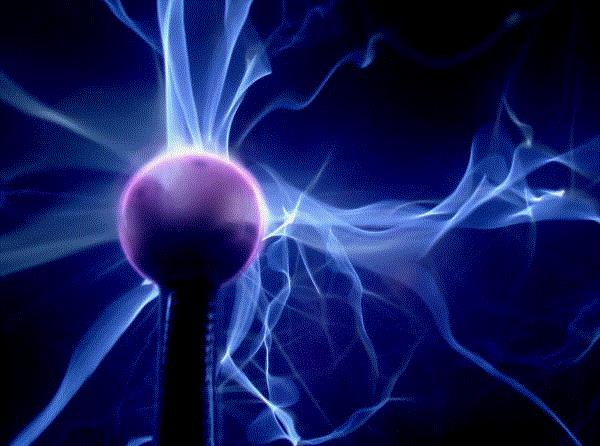
This is probably the coolest image of glowing plasma in the interior of a plasma ball that I can find. But plasma-activated water is more than just woo-woo. (Photo credit: Ruy Lestrade, Wikipedia.)
You know PAW is more than just plugging in a machine and done, like I’d described, so attend the webinar to understand the science behind PAW. Christian will also talk to us about the effects of PAW on seed germination, seedling vigor, crop health and the potential of using PAW in pest management.

Answers to "What the ... ?"
Being a native species, American elm (unsurprisingly) has lots of other species associated with it. I’d seen two of the most common ones on my trip to Winston-Salem.
The first leaf was obviously infested by many leaf galls. They’re most likely elm finger leaf galls caused by tiny eriophyid mites. These galls look quite different from the more common pouch galls (AKA sack galls, which seem to have petioles at the bases of enlarged sacks) and cockscomb galls (I don’t think I need to describe this one; just guess based on the common name) induced by aphids. Go HERE for a great factsheet on the pouch and cockscomb galls from Joe Bogg of The Ohio State University.
The other issue is terminal and leaf distortion caused by woolly apple aphid. The terminal distortion caused by woolly apple aphid is easy to distinguish from the leaf distortion caused by the more common woolly elm aphid—woolly apple aphid causes the stunted terminal to form a rosette-like cluster, whereas wooly elm aphid causes the edge of elm leaf to curl into a tube. Both aphid species infest new leaves in the spring.
The distortions developed so that the aphids can live protected in the rosettes or leaf curls. In the spring, you’ll find lots of aphids of all life stages, honeydew and sooty mold when you open up the rosettes or the leaf curls. By the time I came along in June, the aphids had already migrated to the summer hosts (apples and crabapples), leaving behind only sooty mold-covered terminals. (The summer host of the woolly elm aphid is serviceberry.)
Go HERE for another great fact sheet from Joe Bogg of The Ohio State University on woolly apple aphid and woolly elm aphid.
The offending critters had long gone by the time I found the galls and the rosettes, so treatment isn’t necessary. In fact, the infestations on the American elm trees in downtown Winston-Salem aren’t severe or noticeable enough that any treatment is necessary.
As a parting gift today, I’ll share with you some beautiful powdery mildew mycelial growth on euonymus leaves from a bush near the American elm. Well, I for one think they’re beautiful and fascinating.
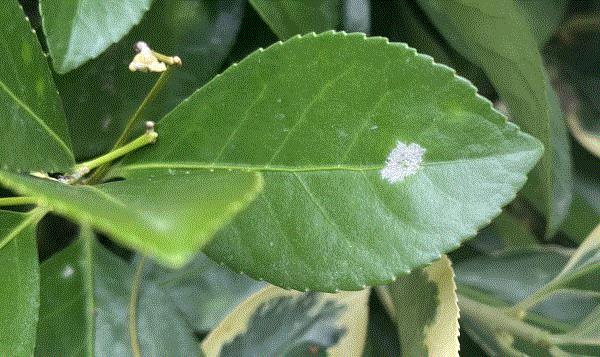




See y'all later!

JC Chong
Technical Development Manager at SePRO
Adjunct Professor at Clemson University
This e-mail received by 27,847 subscribers like you!
If you're interested in advertising on PestTalks contact Kim Brown ASAP!